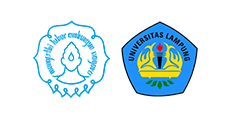AR-KIO: Augmented Reality-based Application as Instructional Media on Input and Output Device Component.
Abstract
Keywords
Full Text:
PDFReferences
Arsyad, A. (2006). Media Pembelajaran. Jakarta: PT. Raja Grafindo Prasada.
Riduwan. (2009 & 2013). Skala Pengukuran Variabel-variabel Penelitian. Bandung: CV. Alfabeta.
Sugiyono. (2010). Metode Penelitian Kuantitatif Kualitatif dan R & D. Bandung : CV. Alfabeta.
Daryanto (2013). Media Pembelajaran. Yogyakarta: Gava Media
Anitah, S. (2012). Media Pembelajaran. Surakarta: Yuma Pustaka.
Azuma, Ronald T. (1997). A Survey of Augmented Reality. Presence: Teleoperators and Virtual Environments, 6(4), 355-385
Aldoobie, N (2015). ADDIE Model. American International Journal of Contemporary Research, 5(6), 68-72
Azuma, R., Baillot, Y., Behringer, R., Feiner, S., Julier, S., & MacIntyre, B. (2001). Recent Advances In Augmented Reality. IEEE Computer Graphics and Applications, 21(6), 34-47.
Luis, CEM., Mellado, RC., Diaz, BA. (2013). PBL Methodologies with Embedded Augmented Reality in Higher Maritime Education: Augmented Project Definitions for Chemistry Practices.
Sayed, NAME., Zayed, HH., Sharawy MI. (2011). ARSC : Augmented Reality Student Card An Augmented Reality Solution For The Education Field, 56(4), 1045-1061













